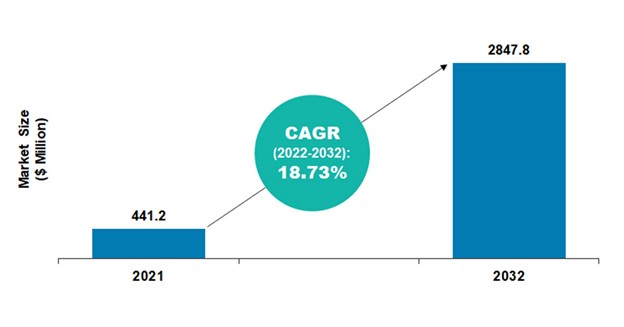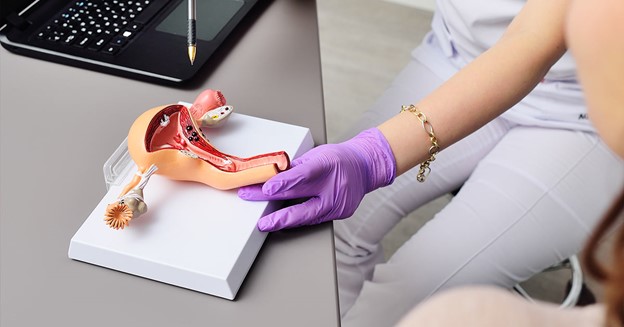Gynecological disorders are disorders that affect the female reproductive system, which includes the organs such as breasts, uterus, fallopian tube, ovaries, and external genitalia.
Every woman suffers from some gynecological disorder at some point. Female sexual functioning is highly affected by gynecological disorders. They must be taken seriously as they can adversely affect the ability of women to reproduce or, in some cases, may threaten their lives.
With the rising obstetrical and gynecological diseases, it becomes a necessity to introduce innovative disease screening and detection machines and therapies to cure them.
Digital polymerase chain reaction (dPCR) is one such major invention in medical science.
Digital PCR is a revolutionary technique to precisely quantify nucleic acids. This technique has been widely replicated worldwide for its high sensitivity and specificity. dPCR has shown great potential in clinical operations, such as tumor liquid biopsy, non-invasive prenatal diagnosis, microorganism detection, and next-generation sequencing library quality control.
What is dPCR?
dPCR is a biotechnological refinement of conventional PCR methods that can be used to directly quantify and clonally amplify nucleic acids, including deoxyribonucleic acid (DNA) or ribonucleic acid (RNA). It allows the precise quantification of nucleic acids, facilitating the measurement of small percentage differences and quantification of rare variants.
This technique was first used in 1992 by Sykes et al, a British geneticist and science writer. He detected genes with mutated heavy chains through limiting dilution and end-point signals quantification, a method that is used in dPCR even today.
Digital PCR is an emerging and powerful technique that allows determining the absolute quantification of target nucleic acid sequences by counting positive amplification signals derived from the amplification of a single DNA template from minimally diluted samples.
The growth in the global digital PCR market is expected to be driven by factors such as the increasing prevalence of infectious and genetic diseases globally, the rising awareness of dPCR-based diagnostic testing, and the significant number of funding for executing research and development.
According to a report by BIS Research, the global digital PCR market is projected to reach $2.84 billion by 2032 from $441.2 million in 2021, growing at a CAGR of 18.73% during the forecast period 2022-2032.

To get a free sample of the report, click here.
Common Gynecological Diseases Detected using dPCR
Digital PCR technique is progressing rapidly with a significant increase in research and development (R&D) activities pertaining to a wide range of dPCR products for disease detection, accentuating their criticality in the healthcare sector.
Some common disorders faced by women are mentioned as follows:
Gynecological tumor: dPCR is used to screen amplified human epidermal growth receptor 2 (HER2) genes as it is a high-throughput and low-cost absolute quantification technique. dPCR can detect the absolute copy number of HER2 in invasive breast cancer, far outdoing semi-quantitative PCR, second-generation sequencing, and hybrid chip technologies.
The concordance with the traditional techniques reaches 93.9% (31/33) in the positive results and 100% (77/77) in the negative results of the dPCR test. Therefore, a higher dPCR value can indicate a higher malignancy and a poorer prognosis. When the copy number of each cell exceeds 3.2, the patient is recommended to take HER2-targeted therapy.
HR-positive breast cancer: Currently, two-thirds of invasive breast cancer cases can be classified as HR-positive. dPCR has mainly been used to evaluate drug resistance in endocrine therapy (ET) for this disease. In recent years, estrogen receptor 1 (ESR1) activating mutations have come into the research focus. It is found that more than 80% of ESR1 mutations are enriched on tyrosine 537 and aspartic acid 538 associated with ET resistance.
dPCR has shown its usefulness in the real-time detection of breast cancer. dPCR monitors recurrent ESR1 mutations and predicts estrogen therapy response. With very high sensitivity, its detection limit could reach 0.05% as compared to 1% in multiplex allele-specific and real-time PCR.
Triple-negative breast cancer (TNBC): TNBCs comprise a group of highly heterogeneous cancers. The subtypes, targets, and mutants in TNBC are mainly detected according to molecular pathology and gene expression profiles. dPCR is a cost-effective solution for researchers to perform real-time tracking of ESR1 mutation in thousands of DNA samples.
The researchers detected drug-resistance-related estimated telomere (EST) gene mutation during endocrine therapy to treat triple-negative breast cancer using the fluid biopsy analysis based on dPCR. The preliminary results showed that dPCR could rapidly detect ESR1 mutation.

Ovarian cancer: Ovarian cancer is the growth of extra cells that are formed in the ovaries. The cells multiply quickly and can invade and destroy healthy body tissues. Ovarian cancer begins when cells in or near the ovaries develop mutations in their DNA.
PCR-based approaches have been successfully applied in deoxyribonucleic acid (DNA) analysis; however, they are limited to the detection of certain specific known mutations. In fact, the third-generation PCR technology, digital PCR, has been shown to possess a high specificity (81%) and ultra-sensitivity (99%) for a known site in ovarian cancer. Digital PCR allows absolute quantification of nucleic acids and performs target mutant or wild-type analysis of biological samples using fluorescent probes.
Overall, DNA can be easily detected and analyzed with high diagnostic sensitivity and specificity in ovarian cancer using the dPCR method.
Conclusion
Digital PCR technology has emerged to be an integrative aspect of healthcare practices by providing most diagnostic laboratory tests for the detection of infectious diseases, oncology, and genetics. The massively parallel methods transcending digital PCR-based molecular diagnostics further enable absolute quantification and detection of cancer cells through using digital PCR technology.
Additionally, the advancement of digital PCR over conventional PCR, such as real-time PCR (RT-PCR), and its rising adoption are anticipated to increase further in the coming years.
Interested to know more about the developing technologies in your industry vertical? Get the latest market studies and insights from BIS Research. Connect with us at [email protected] to learn and understand more.


